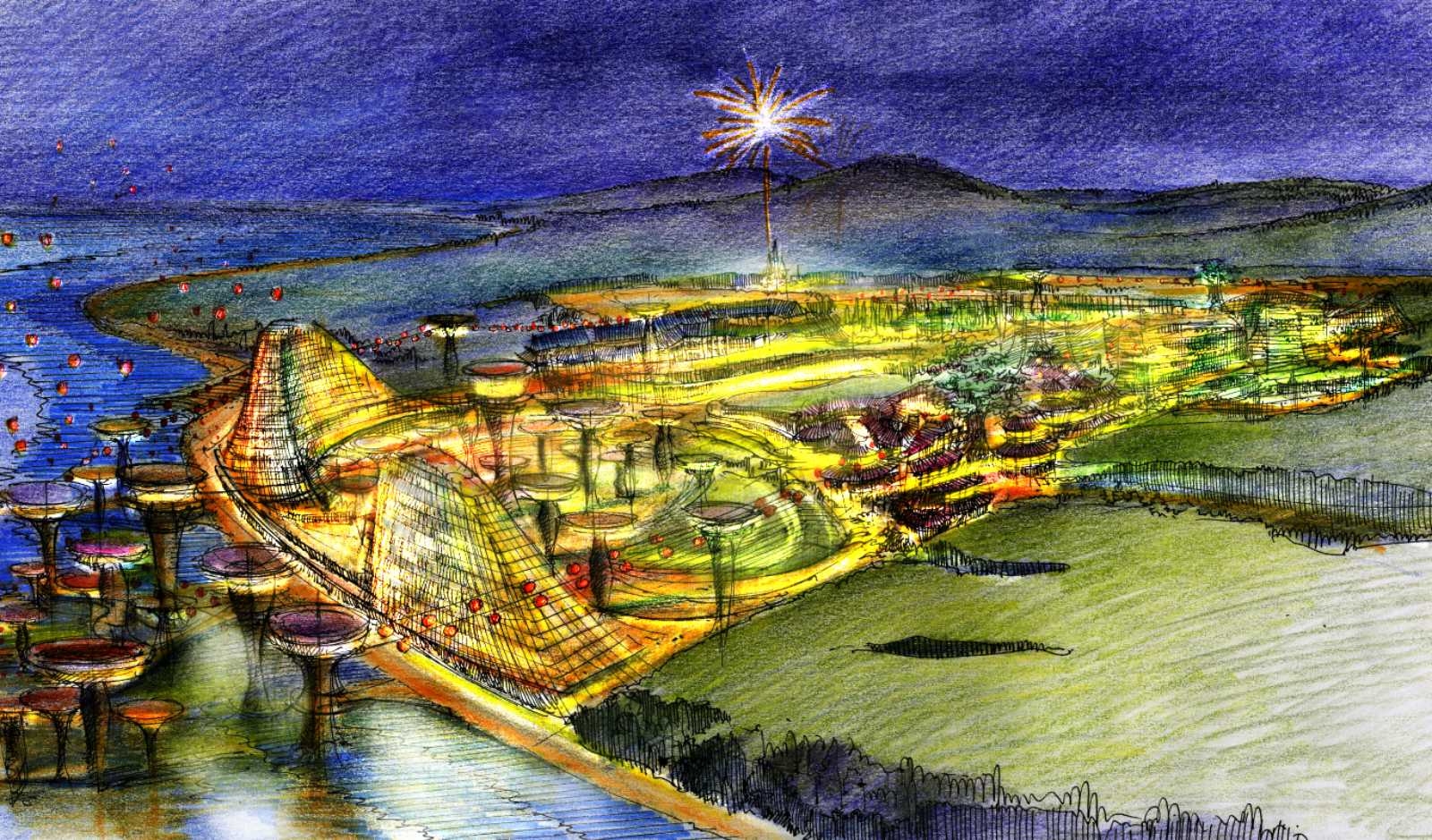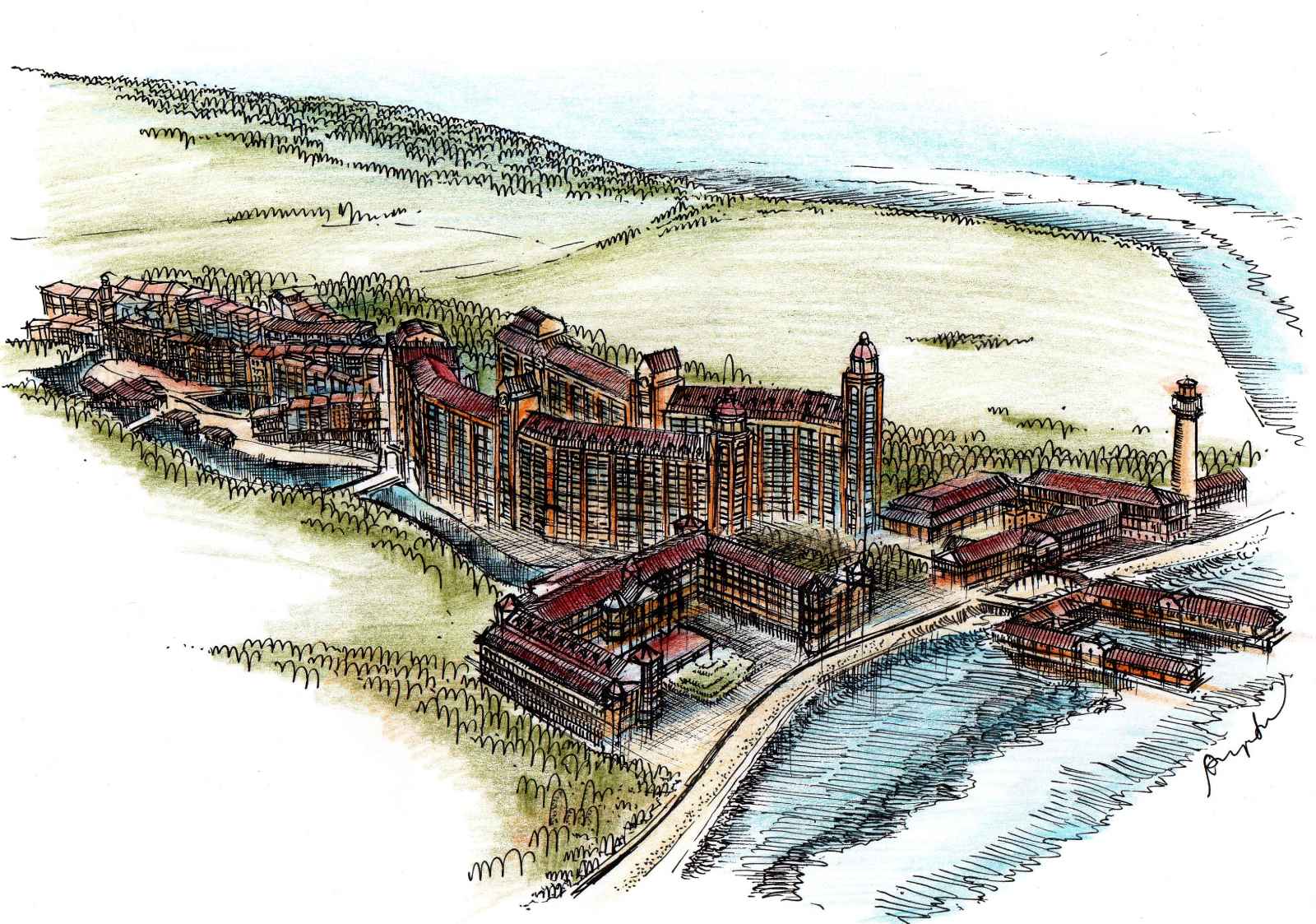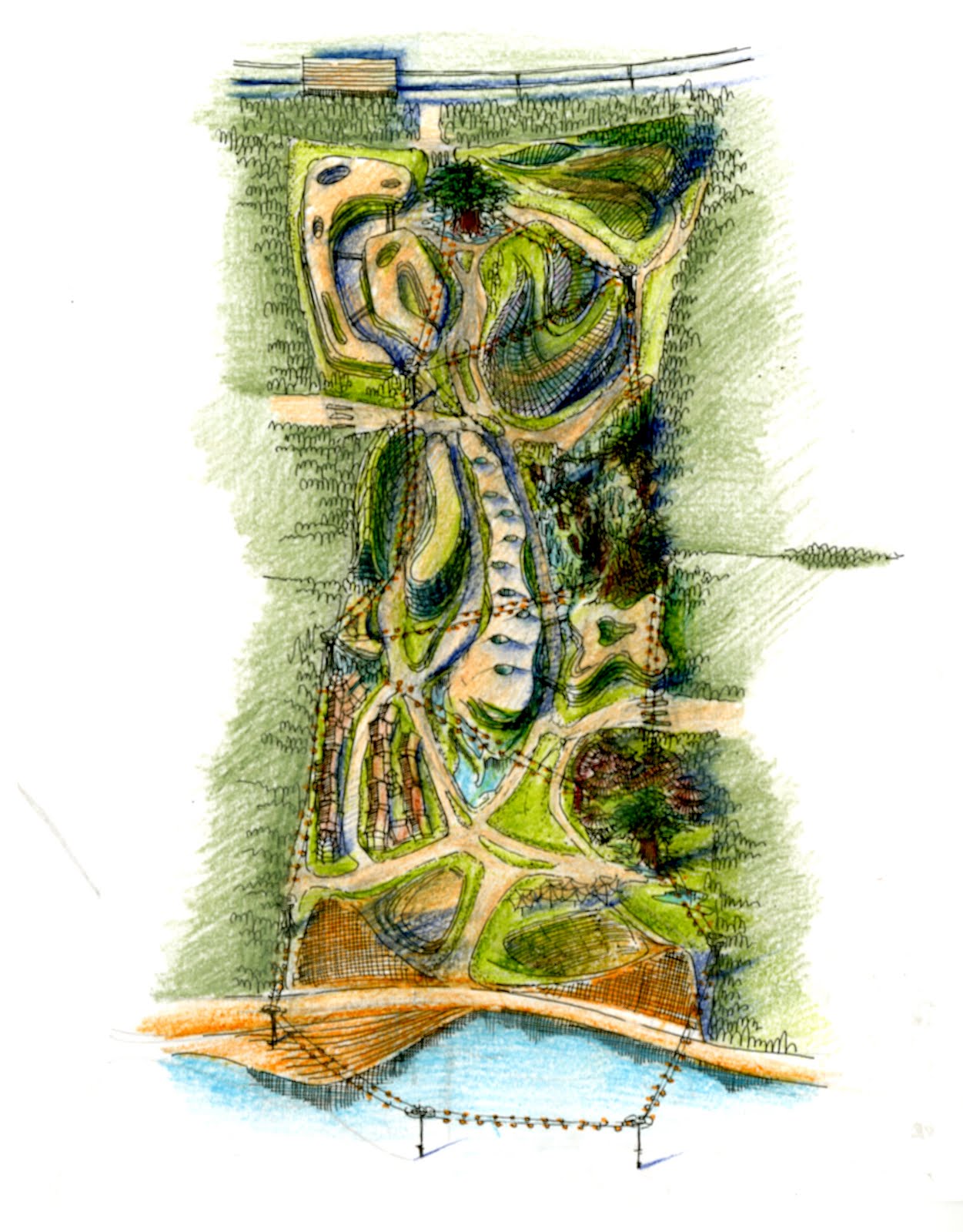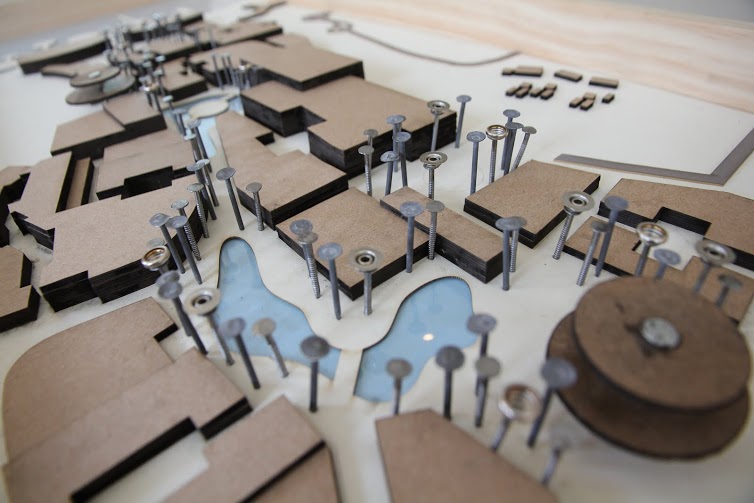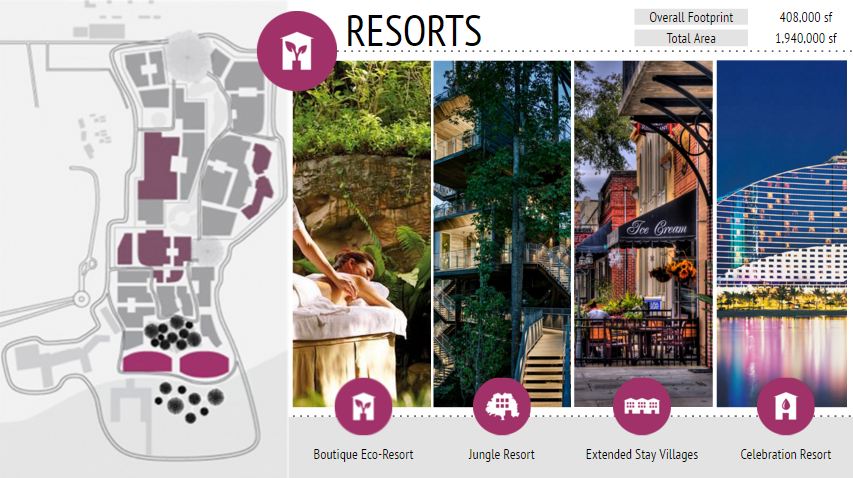Walt Disney RD&E, Hong Kong
Disney was planning to build a magnificent central entertainment, commercial, and resorts area which is called Retail, Dining, and Entertainment District in Hong Kong Disneyland Park (phase II project). The “Future Land” of Disney in Orlando FL was not that successful and one of the major reasons is the initial plan idea by Walt himself was finally changed and never finished. The final project as we see today still has a distance to a real living-entertainment urban district. The overall plan principle of our project could be a solution for several of Hong Kong’s urban issues. Having the urbanest density population in the world, Hong Kong needs to find a new way to supply citizens with more living spaces and high quality living environments. One of the biggest issues in Hong Kong is the self-sufficient percentage is extremely lower than in other cities in China. Citizens of Hong Kong need more areas for planting vegetation. With the growth of the population in Hong Kong, many of the planting areas have been taken over by high-density residential buildings. A famous architecture professional academic report called “The Hannover Principles Design for Sustainability” gives us a branch of inspiration in the giant urban and area planning for the future. What environment influence will the district bring with is the current big issue. The overall plan principle of our project could be a solution for several of Hong Kong’s urban issues. Having the urbanest density population in the world, Hong Kong needs to find a new way to supply citizens with more living spaces and high quality living environments. One of the biggest issues in Hong Kong is the self-sufficient percentage is extremely lower than in other cities in China. Citizens of Hong Kong need more areas for planting vegetation. With the growth of the population in Hong Kong, many of the planting areas have been taken over by high-density residential buildings.
Is there a way to supply enough space for both living areas and for vegetation in the limited land? Another biggest issue for the city is low living quality. Many citizens could only live in quite narrow spaces without enough daylighting, fresh air, green areas, and public spaces. Is there a way that could occupy enough sunlight, fresh air, green space, and enough private living space for each citizen? Unlike EPCOT in Florida, the South China entertainment project gets the challenge to create a real community, which contains the urban farms, eco-resorts, retails, workshops, tree restaurants, farmer markets, and other numbers of creation and production projects. This urban project needs a response to the issue and actually, it can respond to the issue, on the other hand, the mass project is engaged in prediction and imagination of how we might live in the future into centuries. It should do so by example in such an influential city. That is why this design aim from the outset to link the key elements of human nature, technology, and entertainment through the litmus test of sustainability and eco-city practice.
The design proposal is called “Wildheight”, created as part of a program with Walt Disney Imagineering (WDI), which is about a team of explorers came to a spot of wildland besides south China sea, called by the mysterious force of floating lanterns, and each person used their own skill and knowledge to build a city of both technology and nature.
Acknowledgment:
Design group members: Olivia West (illustration, writer, art direction), Catie DelleMonache (storyboards, concept design, writer, illustration), Katie Hanzel (production, art direction, illustration), and Jessica Samaniego (architecture design, land planning, layout, modeling). Thanks to our instructors; Thanks to the Architecture design department, and Themed design departments of Savannah College of Art and Design, also many thanks to the WDI architecture design studio.
Task
develop a unique RD&E experience for Hong Kong Disneyland phase II project, the RD&E project Hong Kong. The whole new plan should integrate the surrounding existing built entertainment park facilities, natural landscape, and the waterfront.
